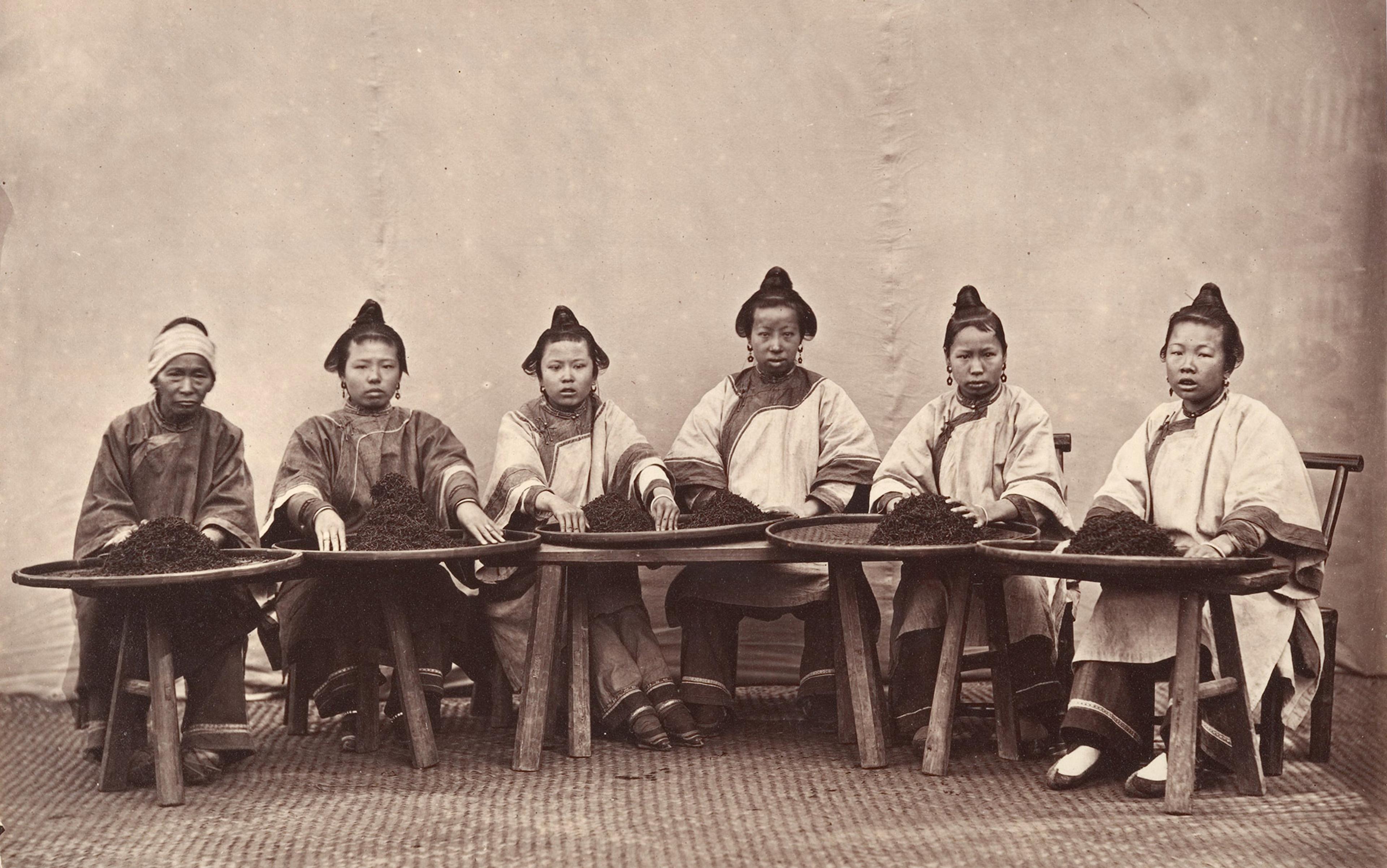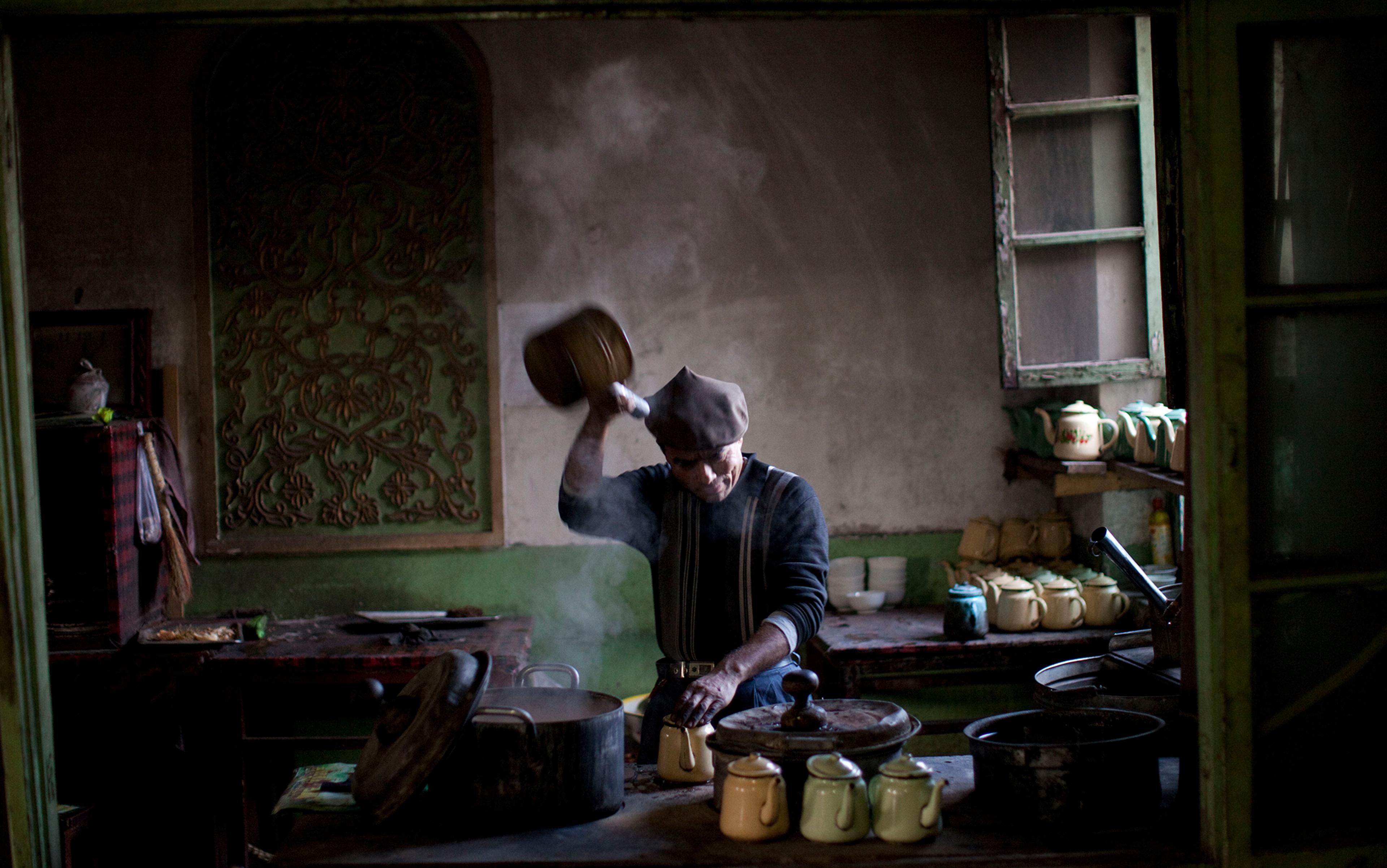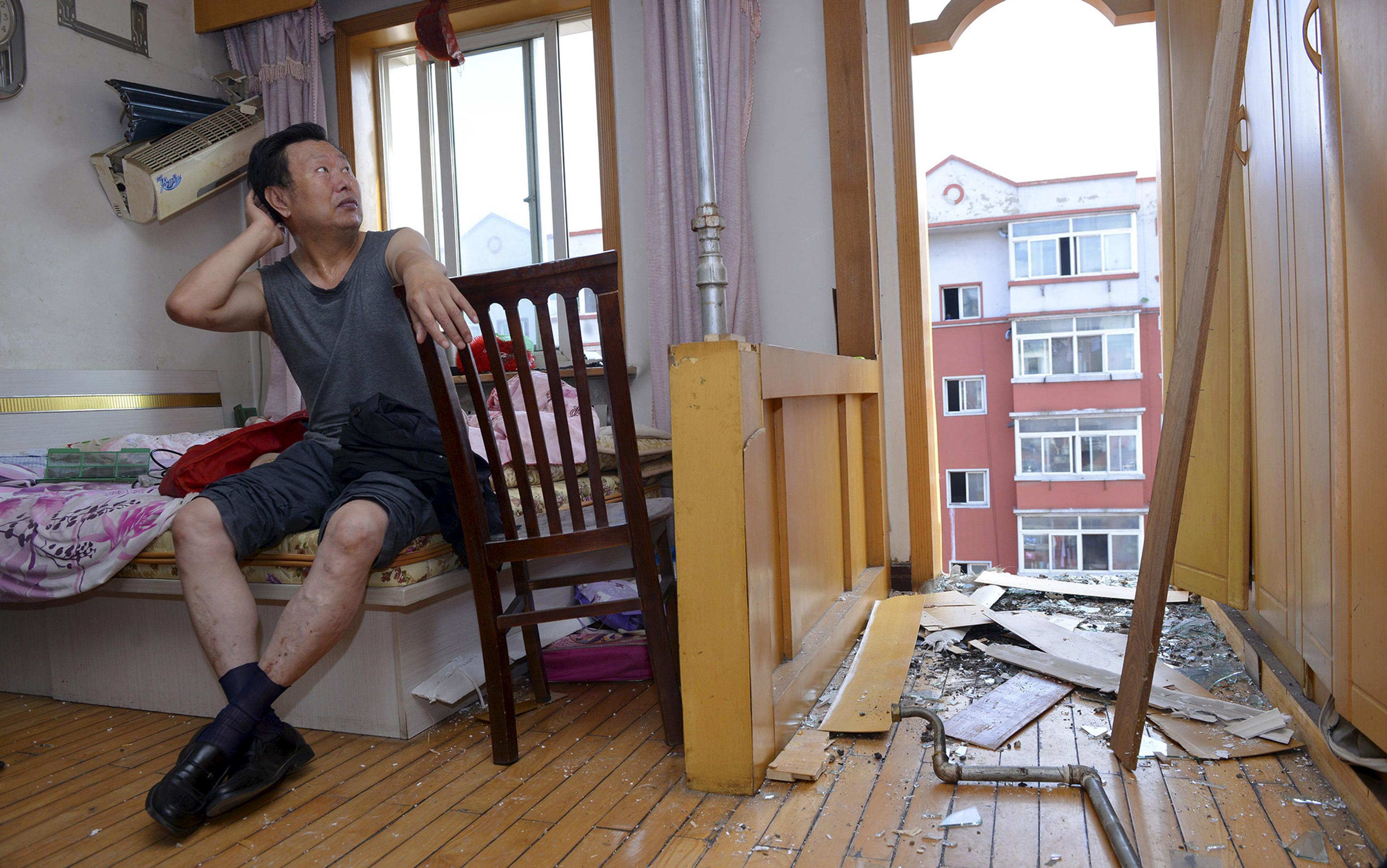Dutch merchants were the first to import tea leaves into Europe in 1609, but by the late 1700s it was the English East India Company, backed by state monopoly, that came to dominate what became known as the ‘Canton Trade’. During its 18th-century golden age, tea symbolised Chinese civilisation’s preeminent standing in the world. The European aristocracy and bourgeoisie fetishised it as a distinctively Asian commodity, the latest in a broader fashion for exotic art, porcelains and silk from the Orient known as ‘chinoiserie’. Tea symbolised the material grandeur of the venerable celestial empire, which the younger European powers admired and sought to emulate.
Over the course of the 18th century, the average English family quintupled its consumption of tea, mixed with sugar and milk, and profits skyrocketed. Demand for tea was so powerful that it fuelled the creation of a British-centred world market, and its taxation accounted for one-tenth of the Crown’s revenue, underwriting the British expansion into South Asia. As the East India Company’s auditor-general declared in 1830: ‘India does entirely depend upon the profits of the China trade.’
The British could offer little in return that Chinese merchants wanted to buy. So, by the late 18th century, British colonial officials began to smuggle Indian opium into the port city of Canton (now known as Guangzhou). When the Daoguang Emperor, who ruled from 1820 to 1850, attempted to enforce a longstanding prohibition on the narcotic, British officials and traders declared war under the banner of defending liberty of trade. The lopsided British victory in the first Opium War (1839-42) inaugurated what is known today in China as the ‘century of humiliation’. Put simply, tea helped launch the British empire while also setting into motion the long decline of China and the Qing dynasty. Only with the rise and victory of the Communist Party in 1949, the nationalist lore goes, could the original shame of military defeat and colonialism be redeemed.
China had been cultivating the tea plant for more than 1,000 years – a wondrous product of nature painstakingly perfected by artisanal masters. England, however, came to the contest with iron ships, powerful artillery and the backing of the world’s first industrial revolution. For scholars of European empire and modern Asia alike, it’s typically at this point in the story – with the rise of the West now firmly established – that the Chinese tea trade recedes from view.
But, in fact, the post-Opium War tea trade has some important things to tell us about the history of capitalism. Looking beyond the North Atlantic world, in the tea districts of 19th-century China in particular, modern capitalism continued to develop, flexible and globally oriented in character. Even in the Chinese hinterlands, we find the accumulation of capital dependent neither upon spectacular technological innovation nor particular class relations, but instead manifest in a new social logic of global competition. After all, the Chinese treaty port system implemented after the First Opium War didn’t spell the demise of the tea industry but its expansion.
During the rest of 19th century, tea exports climbed even faster, as buyers from continental Europe and the United States joined the British. By the early 20th century (the time of the first systematic surveys), the tea trade continued to employ more people – peasant families, women, children, seasonal workers and porters, spanning rural villages and treaty ports – than any of China’s early urban industries. In response, rival industries emerged in colonial India, Ceylon, Japan, Taiwan and the Dutch East Indies. Just when most histories turn their attention elsewhere, the Chinese tea trade was growing larger than ever, with ever-deeper overseas entanglements.
The Chinese tea trade actually represented China’s entry point into global capitalism. Tea was traded, directly and indirectly, for Patna opium, Peruvian silver, Caribbean sugar, English textiles and Burmese rice. Such activity constituted the first truly global division of labour, powered by the regional specialisation of colonial-world cash crops – or, as W E B Du Bois put it in his book Black Reconstruction (1935): a ‘dark and vast sea of human labour in China and India, the South Seas and all Africa; in the West Indies and Central America and in the United States … spawning the world’s raw material and luxury – cotton, wool, coffee, tea …’ This global division of labour also reshaped the Chinese countryside in dynamic and novel ways.
For much of the 20th century, Western experts viewed China as a precapitalist society. They typically equated ‘capitalism’ with industrialisation and innovation, spectacular benchmarks such as coal-powered engines, steel factories and advances in chemical and mechanical engineering. These technological breakthroughs distinguished the ‘West’ from the ‘rest’, and it was their absence in China – and much of Asia – that marked it as ‘precapitalist’.
From a distance, the Chinese tea trade of the 19th century confirms this view, as merchants and peasants continued to use traditional instruments and techniques. Buddhist monks during the Tang dynasty (618-907) were the first to regularly sell tea. Early methods were labour-intensive, such as packing leaves into a cake or grinding it into a fine powder (methods that have survived today, for instance, in Yunnan pu’er tea or Japanese matcha). The familiar roasted loose-leaf variety was first documented in 1539, only decades before its initial journey westward. Green tea varieties came from Huizhou in the southeastern Anhui province, where records dated its invention to the Longqing era (1567-72), and the method travelled south to the Wuyi mountains in northwest Fujian, where monks concocted a new variety of semioxidised dark leaves known worldwide as ‘black tea’.
According to 20th-century surveyors, the first stage of loose-leaf production consisted of peasant households, chiefly women, cultivating and plucking leaves and then lightly roasting them to prevent excess oxidation. The families heated the leaves in the same kitchen woks they used to cook their meals. They then carried the leaves in large sacks to the local market, where, as leverage, haggling merchants knew they could simply wait out the peasants, for the leaves were rotting slowly inside the bags. The merchants finished the refinement process in their own makeshift workshops, typically the spare rooms inside their homes or small rented buildings. They hired a combination of local and migrant seasonal workers from the neighbouring counties to perform the sifting, rolling, roasting and packaging tasks. Their tools were no more sophisticated than bamboo baskets and wood-powered stoves.
We don’t need to locate cutting-edge technologies to discover the prevalence of a ‘capitalist spirit’
Although the development of tools and technology has been a hallmark of modern industry, we shouldn’t fixate on them at the expense of analysing human activity and social life. David Landes, an esteemed historian of the European Industrial Revolution, foregrounded technological innovation and claimed that the drive to raise productivity ‘was unknown’ in imperial China. Instead, the ‘great virtue was busyness – unremitting diligence in one’s tasks’. As proof, in his book Revolution in Time (1983), he pointed to the absence in China, relative to Europe, of mechanical clocks and timekeeping devices that could accurately measure and regulate productivity.
Chinese history, however, shows us that we don’t need to locate specific cutting-edge technologies to discover the prevalence of what Max Weber called a ‘capitalist spirit’ – or the belief, as Weber put it (quoting Benjamin Franklin), that ‘time is money’. This was already the case in post-Opium War China, a commercial agrarian society that was rapidly thrust into producing for, and competing with, an industrial global market on a new scale. We can take, as a clear illustration, the peculiar methods of timekeeping that actually were in use in the Chinese tea districts, which, though far from cutting edge, unquestionably evolved over the course of the 19th century.
Samuel Ball served as the East India Company’s inspector in the southern port of Canton in the 1810s. Though he never witnessed tea production firsthand, he learned from informants that in rural Anhui the managers would regulate tea production by using an idiosyncratic, seemingly exotic timekeeping device: incense sticks that burned slowly at a regular rate. The sticks came in various dimensions but were generally designed to last 40 minutes. The practice of keeping time by tracking the burning of incense or rope-ends dates back to the 5th century in China and Japan. It’s the same principle used in hourglasses and water clocks found elsewhere across the ancient world. Piecemeal evidence suggests that incense was used to regulate time for coalmining and farm irrigation in modern China as well.
In his book An Account of the Cultivation and Manufacture of Tea in China (1848), Ball wrote that Chinese tea merchants used the burning incense sticks to track the time of various stages of tea roasting. ‘The time of roasting,’ he wrote, was ‘regulated by means of the instrument denominated a Che Hiang’ (or zhi xiang, meaning ‘stick of incense’). Why was it necessary to keep track of time in the tea-making process? In this, the Chinese industry shared much in common with the massive, nascent industrial sugar plantations of the Caribbean, which had matured around the same period. According to the American anthropologist Sidney Mintz, writing in his book Sweetness and Power (1985), two factors explain the industrial sense of time-discipline that characterised these large estates. First, there was the natural pressure to process sugarcane before it spoiled, often within a day; and, second, planters felt the social pressure of market competition to minimise production costs. Similar dynamics could be observed on the other side of the world, in the valleys of central China.
Because tea leaves are a natural, perishable product of the soil, their quality depends upon roasting, sifting and rolling in a timely fashion. At the time of Ball’s conversations, merchants monitored these tasks out of concern for preserving the natural physical qualities of the final product. The units of time served as guidelines, but individual workers could adjust the duration as needed. ‘[T]hough the roastings are regulated by the measure of time designated a che hiang,’ Ball wrote, ‘yet that instrument is used more as a guide than a rule.’ The workers were provided with samples and given the discretion to roast for longer or shorter periods, until the leaves acquired the right colour and appearance, as in a cooking recipe.
We also know that, decades after Ball’s account, incense timekeepers began to be used to discipline labour practices in the southern districts of Anhui. Jiang Yaohua, a merchant from She county, Huizhou, operated a booming tea refinery in the market town of Tunxi, where he would ship thousands of pounds of leaves to Shanghai each spring. In his handbook for tea production, he stated that the roasters would first stir the leaves in cool air until ‘80 per cent to a full stick of incense has been used’ and then press the leaves down into the heat for ‘half a stick of incense’. Finally, the worker was to leave the pot directly over the fire for the duration of burning two and three-quarter incense sticks.
No longer a passive function of tea refinement, time now actively regulated the workforce
The process outlined in Jiang handbook followed Ball’s earlier account insofar as it concerned itself with maintaining a high-quality standard for the product. But now it was also designed to create a full itinerary for an 18-incense-stick – or 12-hour – workday. Jiang Yaohua mapped out a schedule that maximised the amount of productive activity possible given the physical limits of his human workforce. Decades later, a social surveyor named Fan Hejun would visit the Huizhou tea districts and comment on the effects of this 18-stick workday. ‘During that time,’ he wrote, ‘one day of roasting labour completely depletes all muscle strength.’ Fan Hejun further observed that the incense sticks now burned to regulate the wages of hired workers:
Taking four baskets as one shift, the skilled workers can earn four units of wages, with each unit worth [about 15 cents]. The unskilled workers who can only roast two baskets per shift only earn, in the span of 18 incense sticks, two units of wages.
Within this action-packed schedule, the incense sticks were used to keep workers on task, leaving little room for the flexible attitude towards completing tasks seen in Ball’s day.
Thus, though the Huizhou merchants continued to burn old-fashioned incense timekeepers, the character of their application had changed. Originally, tea-makers concerned themselves with making the best product, that is, they focused on the consumption of tea. Eventually, merchants would use incense to regulate activity with the aim of maximising production. Timekeeping was no longer a passive function of the natural processes of tea refinement; rather, the abstract units of time now served to actively regulate the physical activity of the workforce. This was not a blind preindustrial ‘busyness’ for its own sake, as in Landes’s depiction, but a pointed impulse to raise the productivity of human labour.
Under pressure to operate as long and efficiently as possible, managers in Huizhou pushed workers to the limits of their bodies, and beyond. Fan Hejun wrote that the tea roasters were ‘required to lean into the stove fire’ where ‘[t]ogether the sun and the stove gang up on the worker’. Describing a tea manufactory in 1930s Tunxi as a ‘steam basket’ (zhenglong), he noted that: ‘Because the labour is so strenuous, the workers sometimes come down with sunstroke, to the point where they fall down dead.’
Why did merchants drive their workers so hard? In a word, competition. Tea exports had rocketed upwards through the end of the 19th century, peaking at 295 million pounds in 1886. Prices, however, had begun to tail off as early as the late 1860s, reflecting oversupply by Chinese tea producers. During those early decades after the opening of the treaty ports, Jiang Yaohua’s father, Jiang Wenzuan, had moved the tea business from Canton to Shanghai, where he struggled. He wrote to his concubine that: ‘The family business is in crisis; it is vanishing to nothing.’ By the late century, new competition from the tea plantations of eastern India and Ceylon devastated the China trade.
At first, the merchants didn’t know what had hit them. As one Qing official wrote in 1887: ‘Those in the thick of the trade appear lost, as if they are in cloud and fog’ (yunwu zhong). By 1903, a Shanghai report could declare that ‘with Ceylon now producing so much tea … this makes it even harder for Chinese dealers to sell their goods’. Faced with rival producers such as these, Jiang Yaohua and other tea merchants hunted for any measures that could cut costs.
The black-tea districts of the Wuyi mountains practised similar labour discipline. As in Huizhou, the tools and technology appeared unchanged for centuries, but focusing on technological continuity misleads about the character and nature of production and economic life for the producers. Labour contractors, known as baotou, from neighbouring Jiangxi, didn’t even avail themselves of the old-fashioned incense timekeepers. Instead, they turned to a series of customs and mythologies to discipline the men, many of whom were part-time farmers from the economically depressed Shangrao county. In the 1930s, the surveyor Lin Fuquan observed such traditions and deplored them as superstitious mysticism.
The slowest worker would be stuck sorting leaves under an oil lamp from dusk till dawn
For instance, Lin noted, the contractors on the Wuyi mountains would, each day, without warning, announce a group smoke break. During the break, the pluckers handed over their baskets to the baotou, who weighed and recorded the leaves on the spot. This unexpected ‘covert weighing’ (ancheng) was technologically unsophisticated, but it functioned similarly to the Huizhou incense sticks. By halting tea plucking at the same time, the tea masters established a baseline quantity of ‘input’ for measuring each worker’s ‘output’ and, by extension, their relative efficiency. The tea masters made no attempt to keep time with mechanical devices. Still they had simple and effective ways to reward the workers who had plucked the most leaves and to punish those with the least. Lin Fuquan saw clearly that: ‘Wages for plucking labour are determined based upon the principle of efficiency [xiaolü], with meticulous rules and clear rewards and punishments.’ Again, no mechanical clocks were necessary to impose this novel productivity regime on workers.
After plucking, the leaves were left out to oxidise during the afternoon, endowing them with their distinctive dark appearance. At night, the workers were woken from their naps and sent to indoor factories, where they spent the night roasting, rolling and sifting the leaves under close watch. Again, the managers rewarded and punished the sorters based upon speed. A fast worker could pick through seven baskets in one shift, and a slow worker only four. In fact, the slowest would be stuck sorting leaves under an oil lamp from dusk till dawn, at which time the next day’s outdoor plucking shifts would recommence. It was an exacting and unrelenting system captured in a work song popular among the men:
After Qingming ends the grain rains begin,
and my thoughts turn to Chongan, how pitiable,
day after day spent besides the bushes,
three nights pass without two nights of sleep.
According to both neoclassical and Marxist economics, modern capitalism could have taken off only with the full alienation and commodification of land, labour and raw materials, that is, the privatisation of common property and the dissolution of older social arrangements such as peasant farming, slavery and serfdom. Only then would peasants and freed people find themselves fully subjected to market pressures or, more optimistically, only then could firms allocate resources most efficiently. Such steps were seen as necessary to foster a modern, industrial sense of time – most fully expressed in mechanical clocks – to shape production and working conditions in industry.
In the Chinese tea trade, however, the peasantry grew tea bushes on their own land, and the workshops operated inside private homes. Workers were either unpaid family members or migrant labour employed on a seasonal basis. The realities of tea production in China stand at odds with the consensus – derived from the Euro-American historical experience – of both traditional neoclassical and Marxist economics. Such scholarship pitted proletarian and profit-maximising individuals against the traditional (and colonial) figures of serf, slave and peasant. Yet, across the rural Chinese tea districts, merchants and managers responded to falling international prices by measuring and regulating the working time of their employees through an approach that was, in spirit and substance, industrial.
These scenes from the tea trade tell us that everyday life for the Chinese peasant of the 19th century was already animated by market logics, far more than even contemporaries recognised. Late imperial Chinese writers tended to describe the countryside as a collection of independent smallholder farms. But the economic reality was more complex. Jiang Yaohua’s rural tea workshop relied upon advance loans from financiers based in Shanghai and other treaty ports. For tea-growing households, tea constituted 60 per cent of their income on average, and even this was hardly enough to keep them fed and secure. In order to survive the winter months, households in Huizhou often took out loans in the form of grain, and in exchange they advanced claims upon their tea crops in the springtime. From a distance, the tea they sold appeared to be a product of their soil and, hence, their property. In reality, before they had even been plucked, the leaves had already been sold to peddlers. Thus, despite exhortations from Qing officials such as Bian Baodi (1824-93), the governor-general of Fujian, to abandon cash crops and return to a life of self-sufficient agriculture, these families couldn’t simply grow for their own needs. To survive, they needed to produce for the market and, by extension, in competition with many others throughout Asia.
This combination of atavistic social forms with modern economic dynamics similarly characterised the production of many of the other commodities that crossed paths with tea during its early modern heyday. Sugar and cotton were grown by enslaved Africans, textiles were spun and woven by coerced young women in England, and opium was supplied through overtaxed Patna farmers.
These productivity gains were won through the beating, whipping and surveillance of the unfree workforce
As for the colonial tea industry of Assam in India, the chief rival to China, British planters relied upon a labour indenture system that officials framed as an extension of centuries-old ‘master and servant’ laws. These were not free arrangements. Nevertheless, overseers squeezed the legally immobilised ‘coolies’, recruited from across eastern India and mostly women, to clear land and pluck and roast leaves. The English planter David Crole remarked, in his book Tea (1897), that:
coolies accomplish much more work now than they did 20 or 30 years ago. The daily task (nirrik) for such work as hoeing, for instance, has increased from 25 to 30 per cent more than what used to be demanded.
Planters and overseers won these productivity gains in part through clever organisational tactics, and in part through the beating, whipping and surveillance of the unfree workforce. As a result of these extraordinary efforts and transformations across Asia, tea became, after water, the world’s most widely consumed beverage – a status it has never relinquished.
In China, as in India and much of the world, capitalism frequently took hold by repurposing ‘traditional’ techniques and technologies. Within the Chinese tea trade, for instance, there was nothing unusual about incense timekeepers. However, devising distinctive methods for incorporating them into a modern regime of accumulation was novel.
The most recent decades of globalisation have made clear just how much capitalist expansion has always been uneven, and reliant upon the path of least resistance, appropriating whatever technologies, materials and people are to be found on hand. Today, the global division of labour encompasses not only capital-intensive, vertically integrated firms, but also, especially in the postcolonial world, horizontal networks of labour-intensive factories – some located in living rooms – that formally resemble the Chinese tea workshops of earlier eras. Precisely because of their labour intensity, such factories for automobiles, textiles and electronics have proven cheaper, more flexible and more adaptable to changing market conditions than their midcentury predecessors. Such strategies powered the ‘rise’ of East Asia in the late-20th century, and they have since been exported to an expanding China, where the government now seeks to restore the country’s earlier world standing, from the era of ‘chinoiserie’.
The story of Asia has been fundamental to the transformation of the global political economy since the late-20th century, but it has often been marginalised in accounts of neoliberal capitalism that focused on a handful of intellectuals in Euro-America. In turn, these accounts struggle to make sense of the rise of China, without a deeper understanding of how the history of capitalism has long been intertwined with the region. If our goal is to tell a more integrative story, then a valuable starting point would be to recognise that China, and Asia more broadly, was not a mere bystander to capitalism’s 18th-century birth in Europe. From the beginning, its people helped to power circuits of capital accumulation spanning the globe – especially through the tea trade – resulting in impersonal pressures toward expansion and acceleration. These social dynamics, shared in common with the rest of the industrial world, have often gone undetected, because they expressed themselves in local and idiosyncratic ways.






